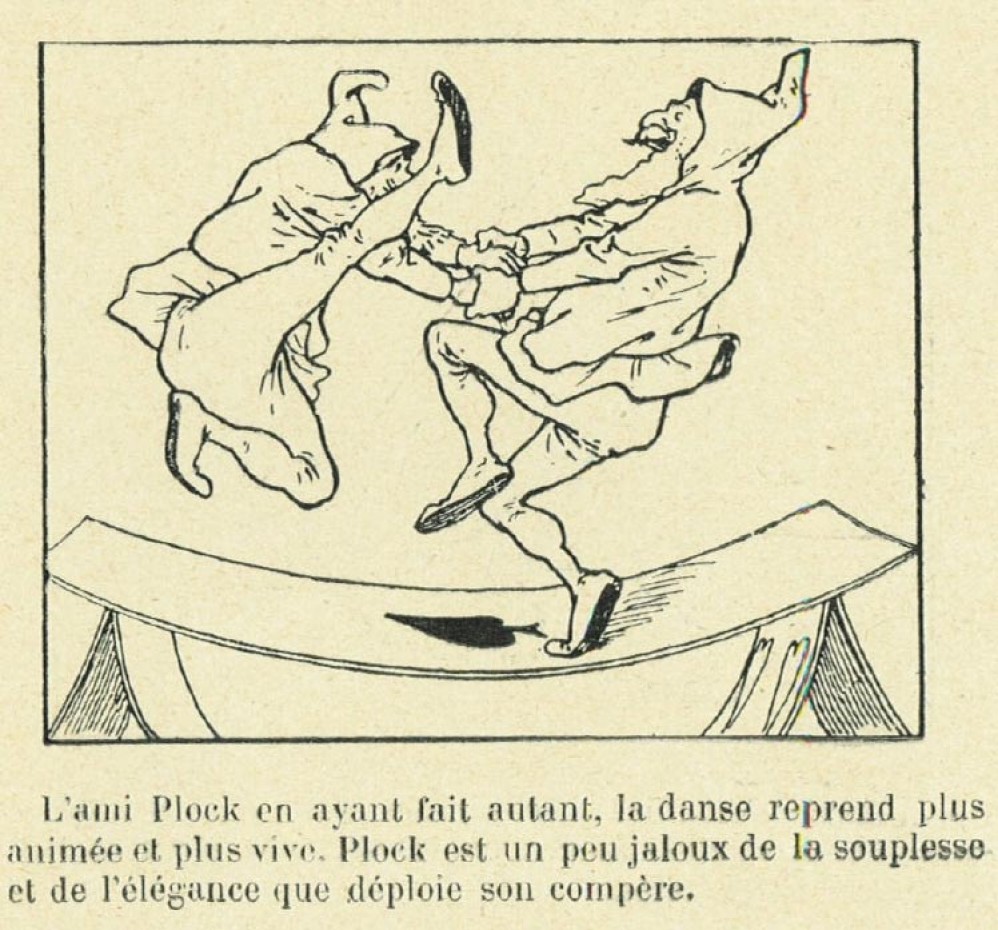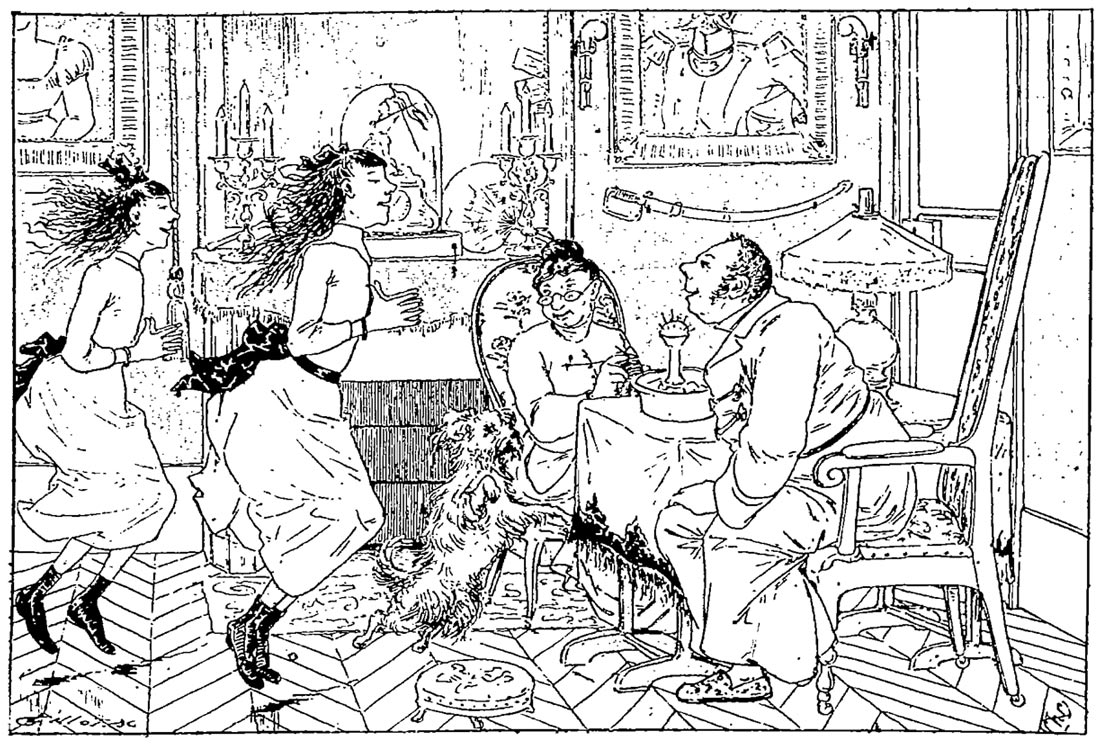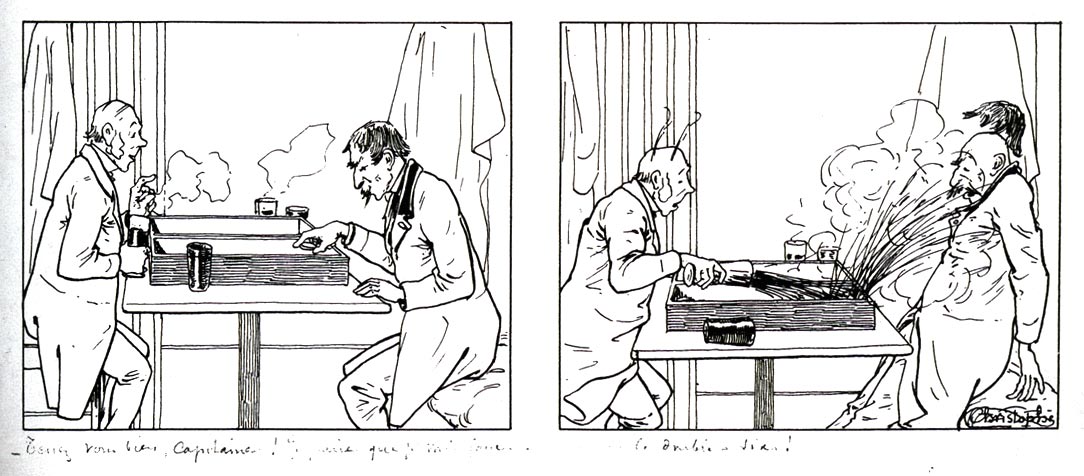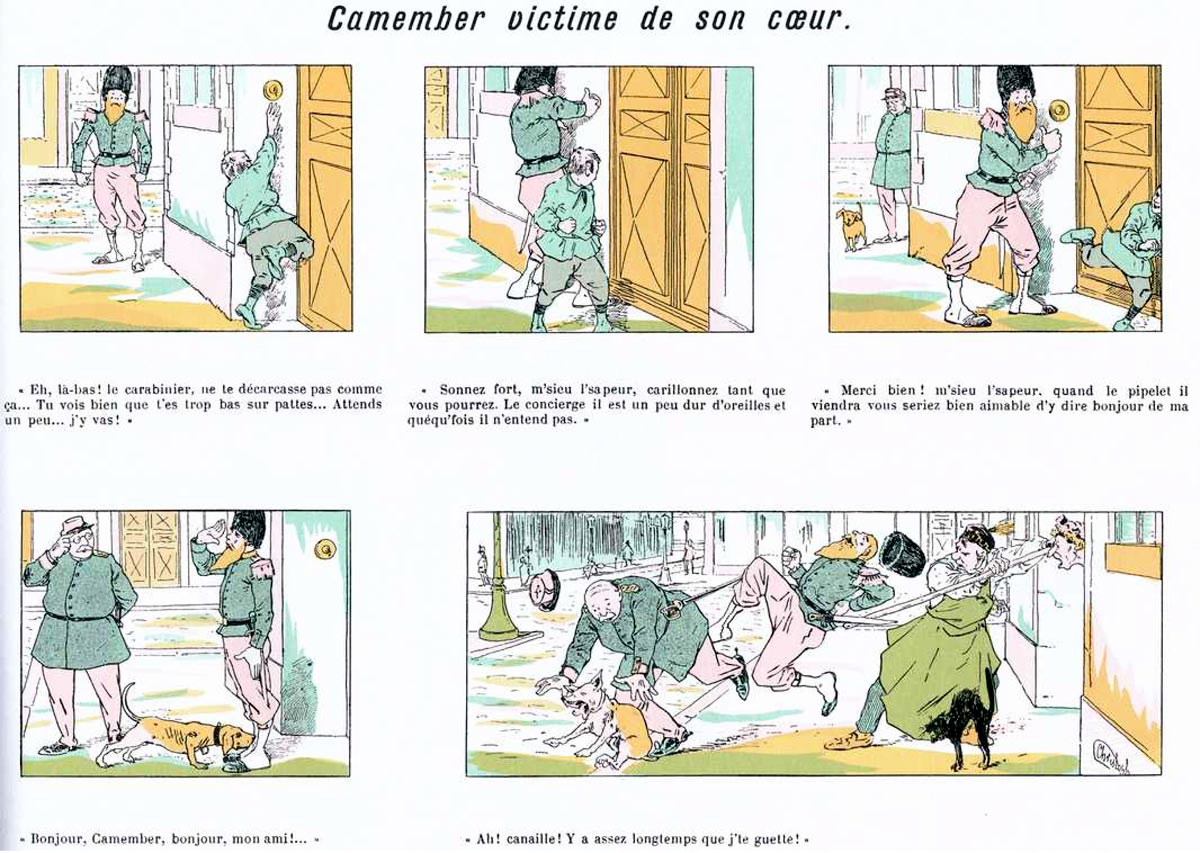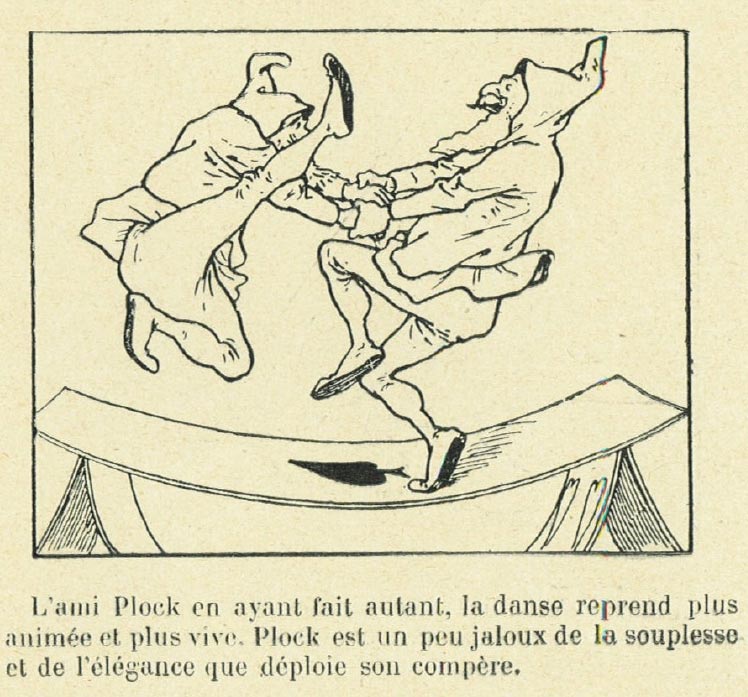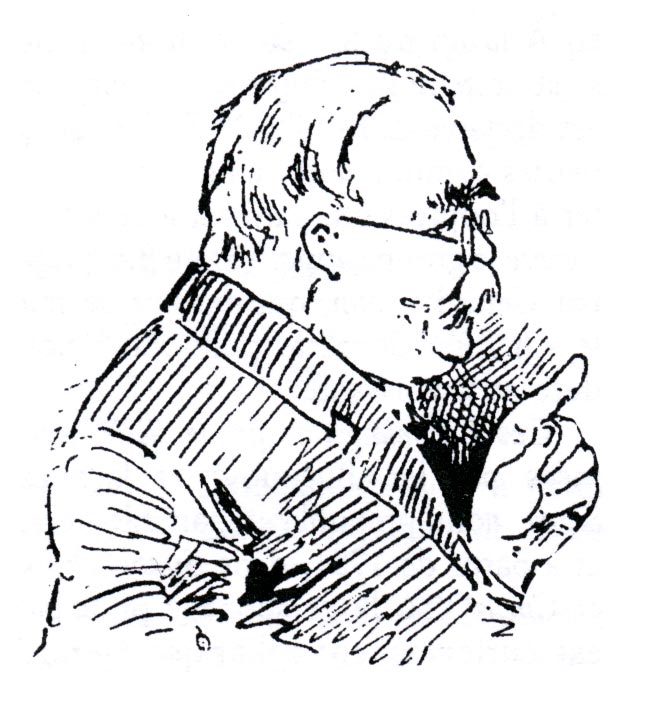'L'Idée Fixe du savant Cosinus'.
Georges Colomb was a late 19th-century, early 20th-century French professor of natural sciences and the deputy director of the botanical laboratory in Sorbonne. Under the pen name Christophe, he was also a pioneer in French comic art, together with his contemporaries Adolphe Willette, Caran d'Ache, Steinlen, Doës, Émile Cohl and Henri de Sta. He is best remembered for his comic series 'La Famille Cornouillet' (1887) and 'La Famille Fenouillard' (1889-1893). Both are the earliest attempts at a comics serial in French magazines and, on an international level, the earliest example of a family comic. Christophe wrote with rich vocabulary, frequent cultural winks and sharp observations of society. Among his other long-running series were 'Les Facéties du Sapeur Camember' (1890-1896), 'L'Idée Fixe du Savant Cosinus' (1893-1899) and 'Les Malices de Plick et Plock' (1893-1904).
Life and career
Marie Louis Georges Colomb was born in 1856 in Lure, not far from Bourgogne, as the son of a school principal. In 1878, he graduated in mathematics, physical sciences and natural sciences from the École Normale Supérieure in Paris. Colomb taught at the Lycée Condorcet in Paris, where one of his pupils was future novelist Marcel Proust. From 1887 on, Colomb taught botany at the Faculty of Paris, and later became a lecturer at the Sorbonne. He was the author of many text books about botany and zoology, popularizing these scientific branches. Colomb remained active as a professor until he reached age 70.
Between 1924 and 1939, Colomb frequently presented shows on Radio-Paris, making him a pioneer of radio communication too. During World War II, Christophe fled with his family to Nyons, where he died from an intestinal obstruction on 3 January 1945.
Early comics
Inspired by Rodolphe Töpffer, Colomb started drawing comics of his own. He had to do this after hours, when he wasn't teaching, preparing lessons or correcting tasks. Instead of signing them with his real name, he settled on a pseudonym 'Christophe', in reference to Christopher Columbus. His first "comic" story was published in Mon Journal on 15 September 1887. Titled 'Histoire Drolatique de Maître Pierre' it shows a teacher in a slapstick situation, depicted in two panels.
Two years later, Christophe created 'La Famille Cornouillet' (1889), an illustrated text story about a Parisian family taking a trip to the countryside and the 1889 World Exhibition in Paris (which introduced the Eiffel Tower). It was published in ten episodes in Le Journal de la Jeunesse, between 12 January and 16 March 1889. Showing a father, mother and their two teenage daughters, the comic was an embryonic version of what later would become 'La Famille Fenouillard'. 'La Famille Cornouillet' attracted the attention of publisher Armand Colin who asked Christophe to create some picture stories for his new children's magazine Le Petit Français Illustré. He made three one-shot pantomime comics 'Pluie et Orage' (23 March 1889), 'Tirants Mal Cousus' (1 June 1889) and 'Un Arroseur Public' (3 August 1889).
'Un Arroseur Public' (1889) is notable for featuring the classic gag of a man hosing a garden, only to have a trickster step on the hose, causing the unexpected gardener to look inside the tube, whereupon the trickster lifts his foot again, spraying the gardener wet. This gag would become world famous in 1895, when the Brothers Lumière staged it for one of the earliest short films. However, Christophe wasn't the first comic artist to depict this joke. On 4 July 1885, Achille Lemot created the earliest known example, printed in Le Chat Noir. In Lemot's gag, the action is set in a street and the hose doesn't spray a man, but splashes inside a store. Hans Schliessmann was the first to set the gag inside a garden, printed in Fliegende Blätter, vol. 85, 15 August 1886. A. Sorel also drew a variation in La Caricature (March 1887) and Hermann Vogel for a picture story in Maison Quantin (1887).
La Famille Fenouillard
Le Petit Français Illustré published another family comic by Christophe, which took the same premise of his previous series 'La Famille Cornouillet', albeit under a different name: 'La Famille Fenouillard' (1889-1893). It ran for 53 episodes, from 12 January 1889 until 24 June 1893. The main characters are a snobby father, Agénor, his stiff wife Léocadie and their dumb teenage daughters Artémise and Cunégonde. The plot takes them to exotic locations like Normandy, the United States (where they meet Sioux Indians), the Bering Street (where they encounter fur trappers), Japan, New Guinea, Persia and Egypt. The dignified bourgeois family gets involved in all kinds of humiliating slapstick adventures.
Although Cham, Nadar and Gustave Doré had already experimented with the comics narrative, Christophe's 'La Famille Fenouillard' can be considered as one of the first French comics serials. The comic strip also inspired other artists to create similar family comics, such as René-Charles Béliveau's 'La Famille Citrouillard' (1904-1905). In 1893, all episodes of 'La Famille Fenouillard' were collected in a landscape format-shaped book, published by Armand Collin.
Unidentified comic strip by Christophe.
Les Facéties du Sapeur Camember
Christophe made new features for Le Petit Français Illustré in the years that followed. Between 4 January 1890 and 12 September 1896, he drew 55 episodes of 'De Facéties du Sapeur Camember' (1890-1896), a text comic about a sapper soldier, François Baptiste Éphraïm Camember, Camember is stupid, illiterate and frequently gets into trouble with his superiors for not understanding or mishandling basic military commands.
L'Idée Fixe du Savant Cosinus
Between 9 December 1893 and 23 November 1899, Christophe drew the text comic 'L'Idée Fixe du Savant Cosinus' (1893-1899). The reader follows the slapstick antics of a brilliant but absent-minded scientist in 62 episodes. Pancrace Eusèbe Zéphyrin Brioche, nicknamed "Cosinus", wants to travel the world to "educate the niggers about mathematics", but never gets further than Paris. René Goscinny and Albert Uderzo referenced this character by naming a Roman in the 'Asterix' story 'La Zizanie' ('Asterix and the Roman Agent', 1970) Savancosinus (in the English version he's called Magnumopus).
Les Malices de Plick et Plock
Christophe's 'Les Malices de Plick et Plock' (23 December 1893 - 1904) ran for 55 episodes in Le Petit Français Illustré and drew inspiration from the malicious gnomes Lothar Meggendorfer had created for the German magazine Fliegende Blätter. In Christophe's version, two gnomes enjoy playing tricks with child-like glee. Despite frequently being punished for their mischievousnes, they never learn from their mistakes.
Other comics
Christophe's comic 'Le Baron de Cramoisy' (1899) remained unfinished. In 1915, his 'Les Douze Commandments de Lord Curzon' was published by editor Armand Collin. He illustrated several works of a spiritual nature, of which he was not the author, such as 'Le Triomphe de Bibulus', 'Les Trois Miracles d'Osiris', 'L'Héritage du Cousin Agathias' and 'Les Contes Antiques'. A lot of his proto comics work was reprinted after his death in 1945.
'Les Malices de Plick et Plock'.
Legacy and influence
In 1975, Colomb's granddaugher Hélène Colomb dedicated the book 'Mon Grand-Père Christophe' to him. 'La Famille Fenouillard' was adapted into a 1925 theatrical play and a 1960 comedy film. The movie was directed by Yves Robert and starred Sophie Desmarets and Jean Richard. The musical score was composed by Gérard Calvi, who later wrote music for the first three animated films based on René Goscinny and Albert Uderzo's 'Asterix'.


